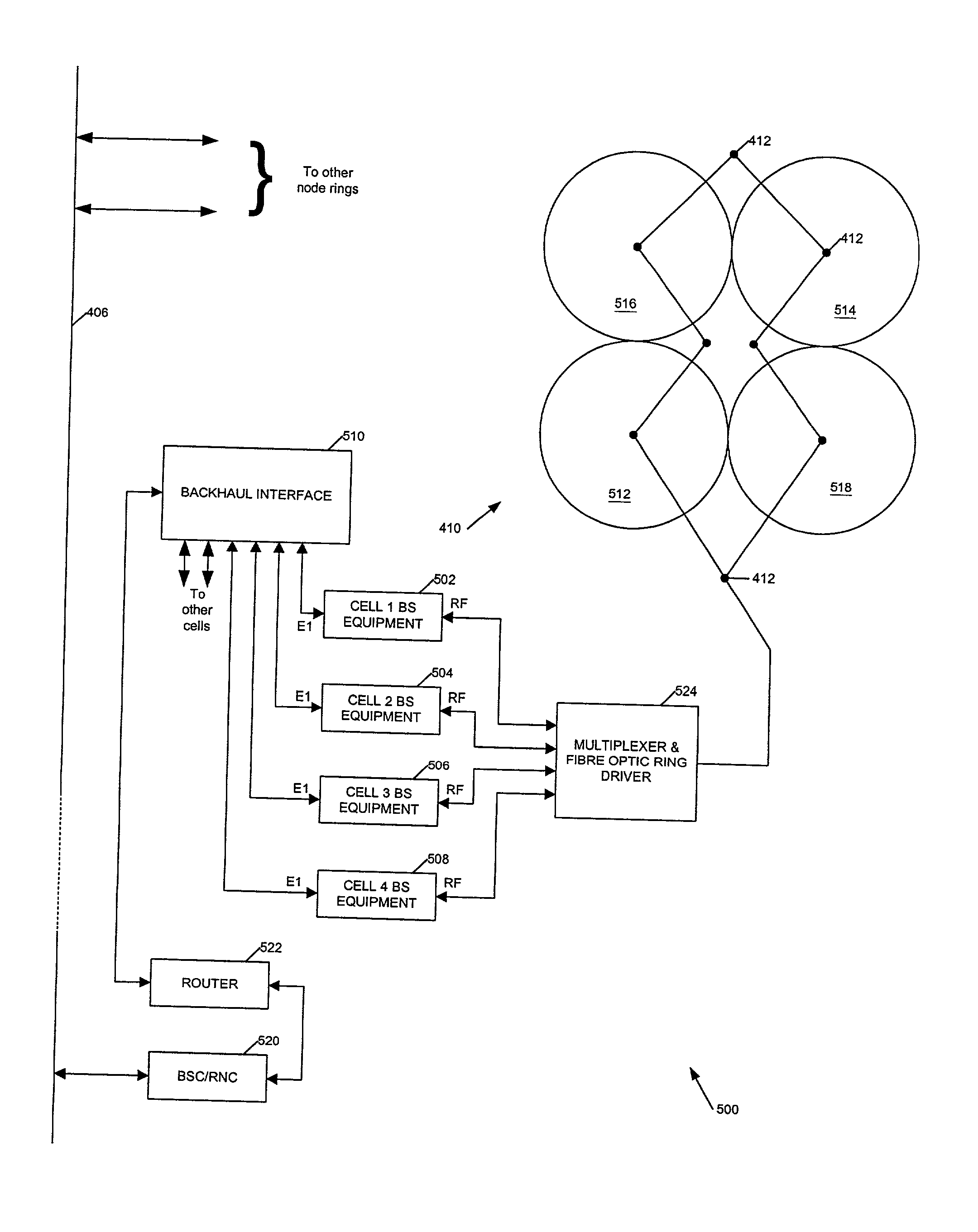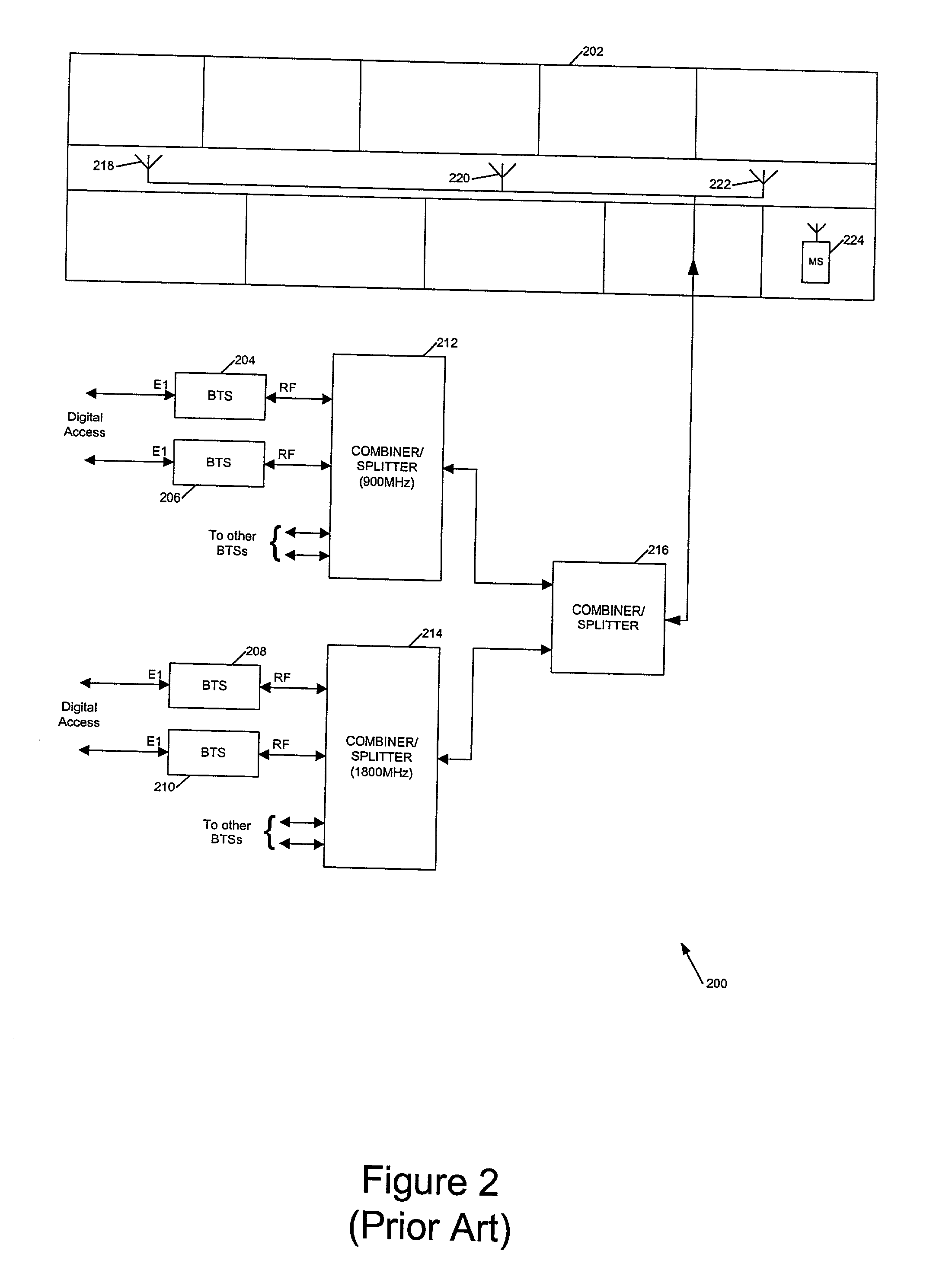Signal transmission systems
a transmission system and signal technology, applied in the field of signal transmission systems, can solve the problems of a 3g network having a significant detrimental effect on the environment, a radiation hazard associated with the increase of power transmission from the antenna, and generally not operator-specific problems
- Summary
- Abstract
- Description
- Claims
- Application Information
AI Technical Summary
Problems solved by technology
Method used
Image
Examples
Embodiment Construction
[0077] Referring first to FIG. 3b, this shows a simplified block diagram of a transmitter signal distribution system. In a third generation CDMA-based cellular mobile communications network adjacent cells or cell sectors may operate on the same transmit frequency since mobile communications devices within the cells identify transmissions using the spreading code sequence rather than (or in addition to) the broadband transmit frequency. Thus, in FIG. 3b, Cells 1 to 4 may all be served by a single transmitter, the need for separate cells arising in part because of the difficulties in providing coverage over a geographical area, particularly in urban environments where buildings cause shadowing and signals tend to propagate along the directions of streets. Thus the arrangement of FIG. 3b assists in achieving uniform coverage over an urban or suburban region and, in common with other aspects of the invention outlined above, also reduces the quantity of equipment required at each antenna...
PUM
 Login to View More
Login to View More Abstract
Description
Claims
Application Information
 Login to View More
Login to View More - R&D
- Intellectual Property
- Life Sciences
- Materials
- Tech Scout
- Unparalleled Data Quality
- Higher Quality Content
- 60% Fewer Hallucinations
Browse by: Latest US Patents, China's latest patents, Technical Efficacy Thesaurus, Application Domain, Technology Topic, Popular Technical Reports.
© 2025 PatSnap. All rights reserved.Legal|Privacy policy|Modern Slavery Act Transparency Statement|Sitemap|About US| Contact US: help@patsnap.com



